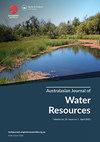法定土地利用规划对水敏感城市设计实践的影响
IF 2.2
Q2 WATER RESOURCES
引用次数: 5
摘要
法规,包括法定土地使用规划法,被视为鼓励采用水敏感型城市设计(WSUD)实践的重要途径。尽管如此,对于法定土地使用规划如何影响WSUD实践的采用,以及如何重新设计规划框架以更好地支持WSUD,很少有实证调查。法定规划对WSUD实践的影响在四个案例中进行了调查,两个来自维多利亚州,两个来自西澳大利亚州。案例研究考虑了法定规划如何影响WSUD实践的四个独立组成部分。在案例研究中,法定规划确实鼓励采用WSUD实践。当法定的土地用途规划包括具体的量化目标,并鼓励在局部街道范围内采用这些做法时,法定的土地用途规划鼓励WSUD做法的能力就会得到加强。研究还发现,法定土地用途规划通过鼓励具体做法来解释WSUD的概念。这些做法反过来又强化了我们对WSUD可能是什么的假设。本文章由计算机程序翻译,如有差异,请以英文原文为准。
The influence of statutory land use planning on water sensitive urban design practices
ABSTRACT Regulation, including statutory land use planning law, is seen as an important way to encourage the adoption of water sensitive urban design (WSUD) practices. Despite this, there has been little empirical investigation of how statutory land use planning influences the uptake of WSUD practices, and how planning frameworks could be redesigned, to better support WSUD. The influence of statutory planning on WSUD practices was investigated in four case studies, two from Victoria and two from Western Australia. The case studies considered how statutory planning influenced four discrete components of WSUD practice. In the case studies, statutory planning did encourage the adoption of WSUD practices. The capacity of statutory land use planning to encourage WSUD practices was enhanced when statutory planning included specific quantitative targets and when it encouraged the adoption of these practices at the localised, street scale. The research also found that statutory land use planning interprets the WSUD concept, by encouraging specific practices. These practices, in turn, reinforce our assumptions about what WSUD might be.
求助全文
通过发布文献求助,成功后即可免费获取论文全文。
去求助
来源期刊

Australasian Journal of Water Resources
WATER RESOURCES-
CiteScore
5.10
自引率
21.90%
发文量
25
期刊介绍:
The Australasian Journal of Water Resources ( AJWR) is a multi-disciplinary regional journal dedicated to scholarship, professional practice and discussion on water resources planning, management and policy. Its primary geographic focus is on Australia, New Zealand and the Pacific Islands. Papers from outside this region will also be welcomed if they contribute to an understanding of water resources issues in the region. Such contributions could be due to innovations applicable to the Australasian water community, or where clear linkages between studies in other parts of the world are linked to important issues or water planning, management, development and policy challenges in Australasia. These could include papers on global issues where Australasian impacts are clearly identified.
 求助内容:
求助内容: 应助结果提醒方式:
应助结果提醒方式:


